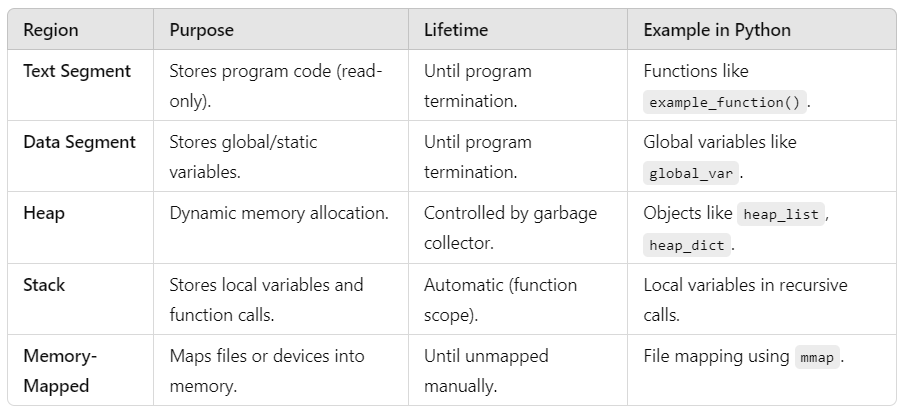Address Space in Linux
When a program runs in Linux, it is allocated an address space that organizes memory for various purposes. This blog explains the structure of an address space, explores the roles of global variables, heap, stack, memory-mapped segments, and demonstrates these concepts with a simple example.
What Is Address Space?
An address space is the range of memory addresses assigned to a process by the operating system. This memory is divided into distinct regions, each serving a specific purpose.
Key Regions of Address Space
Text (Code) Segment:
Contains the program’s executable code (instructions).
This segment is typically read-only to prevent accidental overwriting.
Data Segment:
Stores global and static variables.
Subdivided into:
Initialized Data: Variables with initial values.
Uninitialized Data (BSS): Variables without initial values.
Heap:
Used for dynamic memory allocation.
Memory allocated at runtime grows upwards.
Stack:
Stores local variables, function arguments, and return addresses.
Grows downwards with function calls.
Memory-Mapped Segment:
Used for shared libraries, memory-mapped files, and hardware access.
Python Examples for Address Space Regions
1. Text (Code) Segment
The text segment contains the program’s executable code. In Python, functions and classes are stored in this region.
Example:
The function
example_functionresides in the text segment.It is immutable; modifying its bytecode would require advanced techniques (and isn’t recommended).
2. Data Segment
Global and static variables are stored in the data segment. While Python manages variables dynamically, we can mimic this behavior using global variables.
Example:
global_varrepresents a variable stored in the initialized data section.Uninitialized global variables (not common in Python) are analogous to the BSS segment.
3. Heap
The heap is used for dynamically allocated memory. In Python, all objects (lists, dictionaries, etc.) are dynamically allocated on the heap.
Example:
heap_listandheap_dictare created dynamically, and their memory resides in the heap.The
idfunction returns the memory address of these objects.
4. Stack
The stack is used for managing function calls and local variables. Each function call creates a new stack frame.
Example:
Each recursive call creates a stack frame containing the local variable
n.Excessive recursion can lead to a stack overflow.
Simulating Stack Overflow:
5. Memory-Mapped Segment
Memory mapping allows files or devices to be mapped into memory, enabling efficient access. In Python, the mmap module provides this functionality.
Example:
This maps
example.txtinto memory, allowing direct access to its content.Useful for large files or inter-process communication.
Detailed Memory Region Characteristics
Conclusion
Understanding memory management and address space regions is crucial for optimizing application performance and debugging issues. Python or other high-level languages provides abstractions for many low-level concepts, but knowing how memory is organized helps write efficient and robust code.








